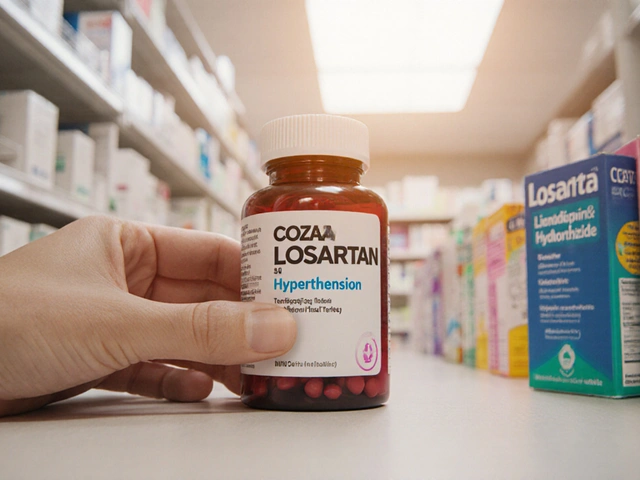When a doctor prescribes a macrolide antibiotic, many patients wonder if Roxithromycin is the right choice or if another drug might work better. Below we break down what Roxithromycin does, how it stacks up against common alternatives, and what factors should guide your decision.
What is Roxithromycin?
Roxithromycin is a semi‑synthetic macrolide antibiotic that inhibits bacterial protein synthesis by binding to the 50S ribosomal subunit. It is marketed in many countries for respiratory tract infections, skin infections, and some sexually transmitted infections. The drug’s long half‑life (about 12 hours) allows twice‑daily dosing, which many patients find convenient.
How Roxithromycin Works Compared to Other Antibiotics
All macrolides share a similar mechanism, but subtle differences affect spectrum, resistance, and tolerability. The table below compares Roxithromycin with the most frequently prescribed alternatives.
| Antibiotic | Class | Typical Indications | Standard Adult Dose | Half‑life | Common Side Effects |
|---|---|---|---|---|---|
| Roxithromycin | Macrolide | Community‑acquired pneumonia, bronchitis, skin infections | 150 mg twice daily | ≈12 h | GI upset, mild liver enzyme rise |
| Azithromycin | Macrolide | Upper & lower respiratory infections, chlamydia | 500 mg on day 1, then 250 mg daily for 4 days | ≈68 h | Diarrhea, QT prolongation |
| Clarithromycin | Macrolide | H. pylori eradication, bronchitis, sinusitis | 500 mg twice daily | ≈3-4 h | Metallic taste, drug interactions via CYP3A4 |
| Doxycycline | Tetracycline | Acne, Lyme disease, atypical pneumonia | 100 mg twice daily | ≈18 h | Photosensitivity, esophageal irritation |
| Levofloxacin | Fluoroquinolone | Severe pneumonia, urinary tract infections | 500 mg once daily | ≈6-8 h | Tendonitis, CNS effects |
When to Choose Roxithromycin
Roxithromycin shines in situations where twice‑daily dosing improves adherence - for instance, an elderly patient who struggles with complex regimens. Its moderate half‑life also means steady drug levels without the very long accumulation seen with Azithromycin, which can be a concern in patients with cardiac risk.
Key scenarios where Roxithromycin often gets the nod:
- Uncomplicated community‑acquired pneumonia caused by Streptococcus pneumoniae or Haemophilus influenzae.
- Bronchitis in patients without known macrolide resistance.
- Skin and soft‑tissue infections where a macrolide is preferred over a beta‑lactam due to allergy.

Why You Might Pick an Alternative
Each competing drug brings a distinct advantage.
- Azithromycin offers a short‑course regimen (5 days) that reduces pill burden and is useful for sexually transmitted infections like chlamydia.
- Clarithromycin has a broader activity against atypical organisms (e.g., Mycoplasma pneumoniae) and is a component of triple therapy for H. pylori.
- Doxycycline is the go‑to for intracellular pathogens (Rickettsia, Lyme) and works well for patients who need a non‑macrolide option.
- Levofloxacin provides excellent lung penetration and is reserved for severe cases or when resistance to macrolides is documented.
Safety Profile and Drug Interactions
All macrolides inhibit the liver enzyme CYP3A4 to varying degrees. Roxithromycin's inhibition is moderate, which translates to fewer serious interactions than Clarithromycin, but more than Azithromycin.
Important interaction notes:
- CYP3A4 enzyme substrates such as statins (e.g., atorvastatin) can see increased plasma levels when taken with Roxithromycin. Monitor for muscle pain.
- Concurrent use with warfarin may augment anticoagulant effect; check INR more frequently.
- Food does not significantly affect Roxithromycin absorption, unlike some tetracyclines that should be taken on an empty stomach.
Practical Tips for Patients
- Take the tablets with a full glass of water; avoid lying down for 30 minutes to reduce esophageal irritation.
- If you experience mild nausea, a light snack can help - no need to avoid meals entirely.
- Complete the full course even if you feel better; stopping early raises the risk of resistance.
- Report any unusual heart palpitations or persistent diarrhea to your clinician.
Decision‑Making Checklist
- Is twice‑daily dosing manageable for the patient? → Yes → Consider Roxithromycin.
- Is rapid bacterial eradication critical (e.g., severe pneumonia)? → Look at Levofloxacin or high‑dose Azithromycin.
- Does the patient have a history of macrolide resistance? → Choose Doxycycline or a fluoroquinolone.
- Are there contraindicated drugs metabolized by CYP3A4? → Prefer Azithromycin or Doxycycline.
Bottom Line
Roxithromycin offers a balanced mix of efficacy, convenient dosing, and a tolerable side‑effect profile, making it a solid first‑line macrolide for many outpatient respiratory infections. However, the choice should always be individualized-consider infection type, patient comorbidities, and potential drug‑drug interactions before settling on any antibiotic.
Can I take Roxit?? roxithromycin with food?
Yes, Roxithromycin can be taken with or without food. Food may reduce mild stomach upset for some people, but it does not affect absorption.
How long does it take for Roxithromycin to work?
Most patients notice symptom improvement within 48-72 hours, though completing the prescribed 5‑day (or longer) course is essential.
Is Roxithromycin safe during pregnancy?
Animal studies show no teratogenic effect, but human data are limited. It is usually classified as Category B, so doctors weigh benefits against potential risks.
What should I do if I miss a dose?
Take the missed dose as soon as you remember unless it’s close to the next scheduled dose. In that case, skip the missed one and continue with your regular schedule; do not double‑dose.
Are there any foods or drinks I should avoid?
There are no strict restrictions, but alcohol can increase the risk of stomach irritation. If you have a history of liver problems, limit excessive alcohol.







Kasey Marshall
October 26, 2025 AT 12:04